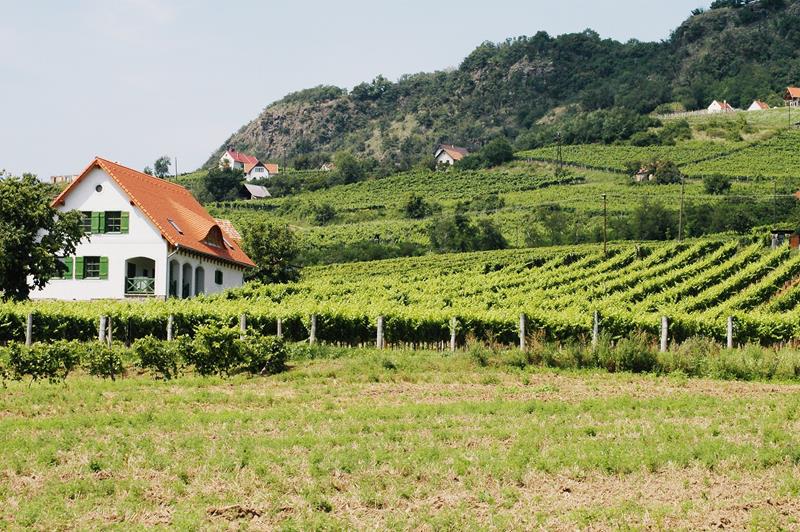Our Wineries
SOPRON REGION
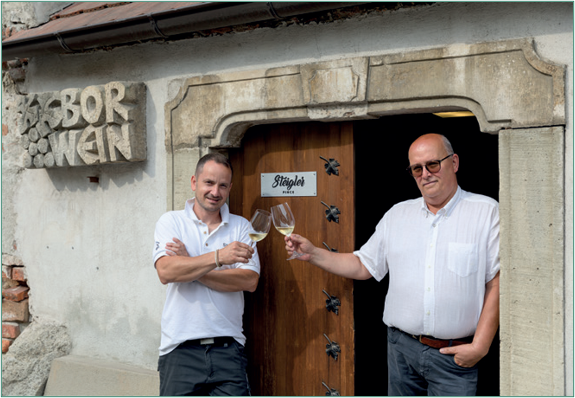
Steigler Winery
Founded in 2015 by Bálint Lőrinczy, Steigler is an exciting addition to the winemaking scene in the Sopron region. Just across the border from Austria, near Lake Fertő, inemaking here dates back to the Celts. The region has a noticeably German-character, with its wines sharing some similarities to the wines of Burgenland. Winemaker Tamás Varga has 21 hectares (52 acres) of organically farmed vineyards to work with. Steigler’s vineyards are located on some of Sopron’s best slopes, including the Steiger, Frettner, and Spern Steiner. One of the important characteristics of the soil in this region is the mica slate on the surface, which is found nowhere else in Hungary. As in Burgenland, Kékfranos (Blaufränkisch) is the most important grape in Sopron. In addition to Kékfrankos, Steigler also grows Cabernet franc, Furmint, Merlot, Muscat Ottonel, Pinot noir, Syrah, Zöldveltelini (Grüner Veltliner), and Zweigelt. They are especially proud of their Furmint plantations. Furmint was a major grape in the region until the early 20th century. All of Steigler’s wines are organic.
ETYEK REGION
Hernyák Estate
The Hernyáks are an extraordinary family in the Etyek wine region. They are an ethnically-Hungarian family, originally from the Vojvodina region in former Yugoslavia. They immigrated to Hungary in a spur-of-the-moment decision—just with 200 Deutsche Marks in their pockets—in the early 1990s to avoid the bloody wars in Yugoslavia. Valéria and Laci Hernyák founded their winery in 1993, and their son Tomi now works with them as a winemaker. They initially started their business in Etyek as a distillery, as they had already worked with making palinka back in Yugoslavia. They quickly fell in love with the terroir in Etyek, and got into the winemaking business. Their winery (which is also their home) has steadily grown over the years, and they now have 17 hectares of vineyards. They grow Pinot Noir, Zöldveltelini, Sauvignon Blanc, and Chardonnay. Their true love is methode traditionelle sparkling wine, and they are big advocates for the region’s potential in this area. Their lovely estate also includes a greenhouse (where they hold small events), their distillery, and tasting rooms. The Hernyák’s hospitality and love for their region and vineyards comes through clearly in their wines.
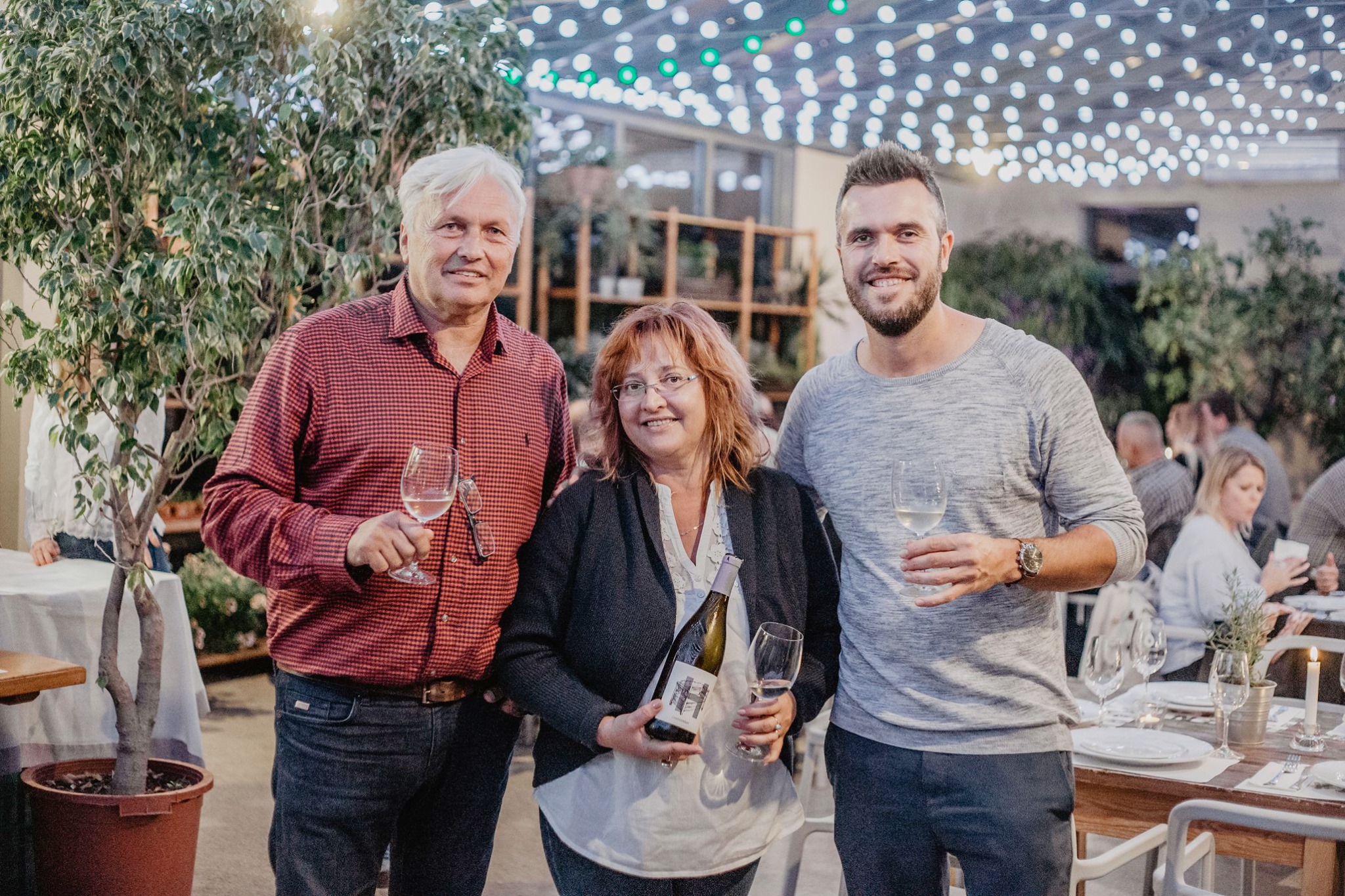
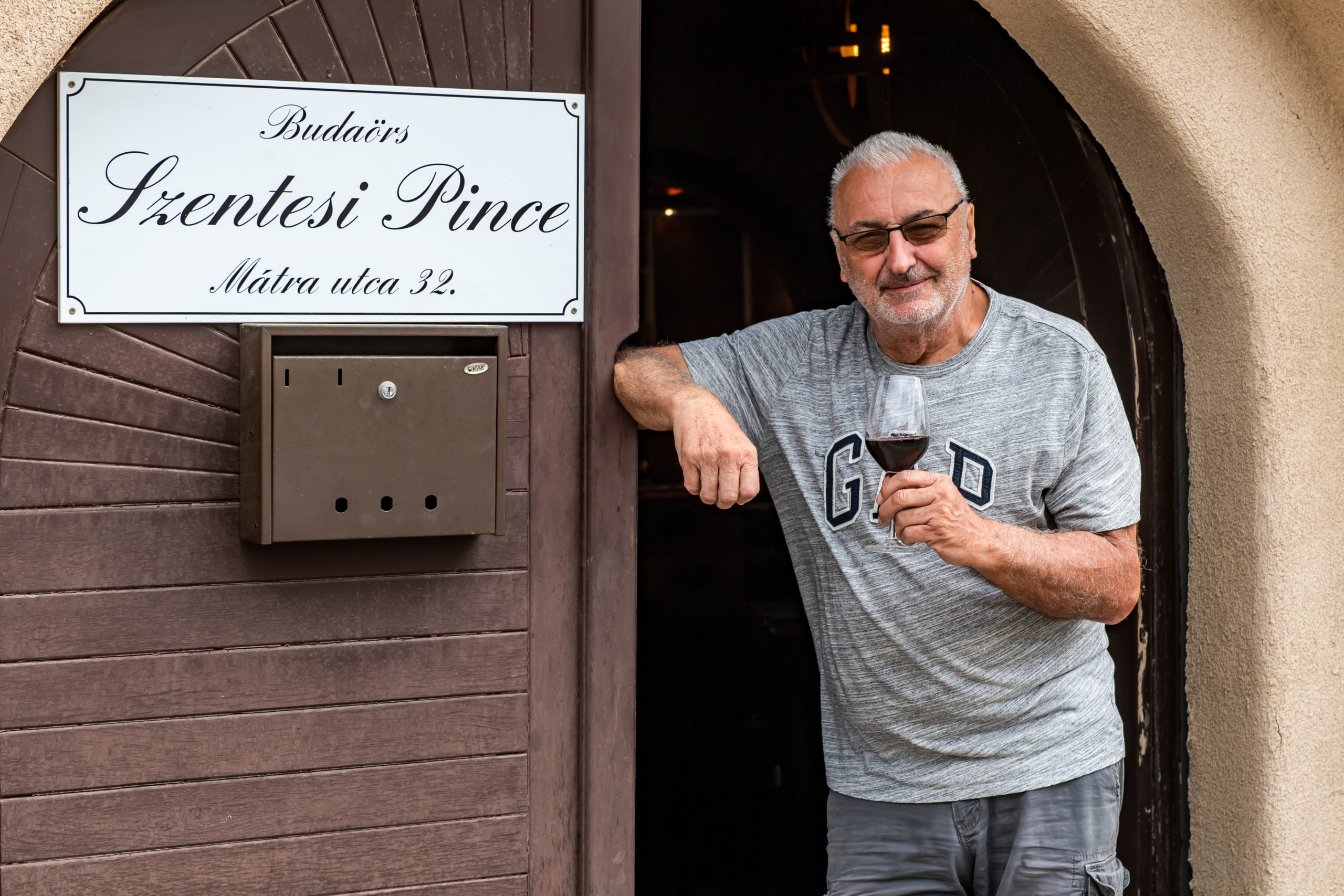
Szentesi Winery
Szentesi is one of Hungary’s biggest champions when it comes to re-discovering old grape varieties, and bringing them back into the vineyard and into the glass. His passion is researching ancient grape varieties (which mostly died out during the phylloxera scourge in the late 19th century), and then acquiring rare vine cuttings from the research institute to plant in his vineyards. He has done this with dozens of varieties, which he then makes experimental small quantities of wine with—magical re-incarnations of ancient, Hungarian varietals which have been (nearly) lost to history. He is the go-to man when it comes to growing grapes like Laska and Tihanyi Kék—grapes grown nowhere else in the world, which he brought back from nothing. Szentesi has 16 hectares of vineyards planted with nearly 30 grape varieties. About 15 percent of the area is dedicated to growing old, obscure varieties that he has resurrected. His cellar is in Budaörs, just beyond Budapest’s border. But his vineyards are at Lake Velence, a 45-minute drive from downtown Budapest‑officially part of the Etyek-Buda region. The shallow lake is Hungary’s third largest, and it contributes to the area’s special climate and terroir.
PANNONHALMA REGION
Cseri Winery
The Cseri family’s winery is located in Pannonhalma, a lesser-known, but up-and-coming region in northwestern Hungary. The region is Hungary’s smallest, with less than 1,500 acres of vineyards. It is best known for its Benedictine archabbey, founded in 996. The Medieval building sits atop of a hill, commanding the landscape when you drive into the area. Most people solely associate Pannonhalma wine with the renowned winery located within the abbey. The Cseri family founded its winery in 2012 after Norbert Cseri spent many years as head winemaker at the abbey. They are one of the few families in the region who sell their wine commercially. The Cseri family produces a variety of wines, but are especially passionate about Rhine Riesling, and they produce a series of six types every year. The entire family is involved with the winery. Eszter (Norbert’s wife) does marketing and sales. Barnabás (their son) just joined him on the winemaking side after working for a few years in the Mosel Valley. Auguszta (their daughter) is studying wine marketing in Wachau, Austria. She helps with running English-language tastings.
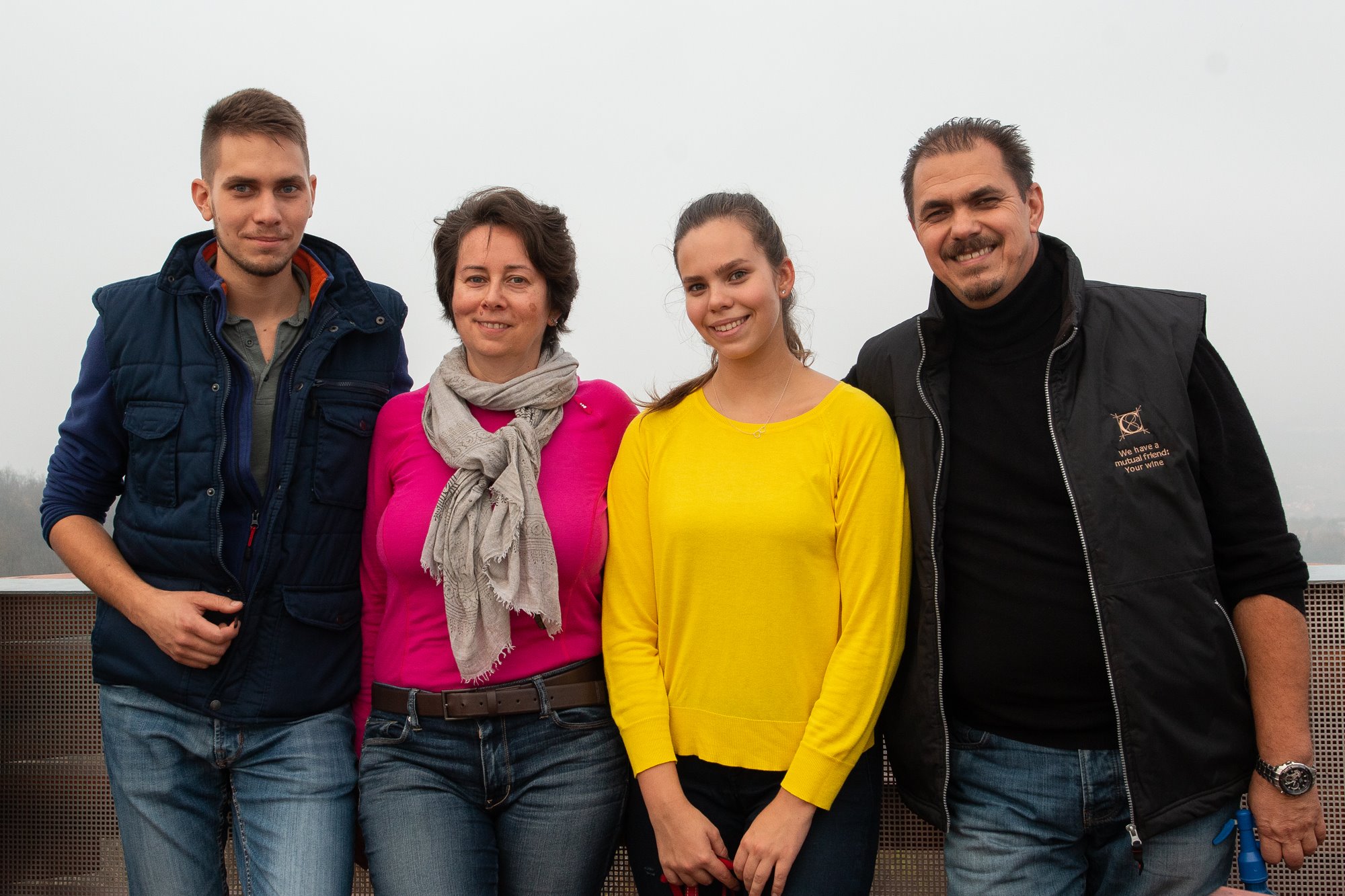
SZEKSZÁRD REGION
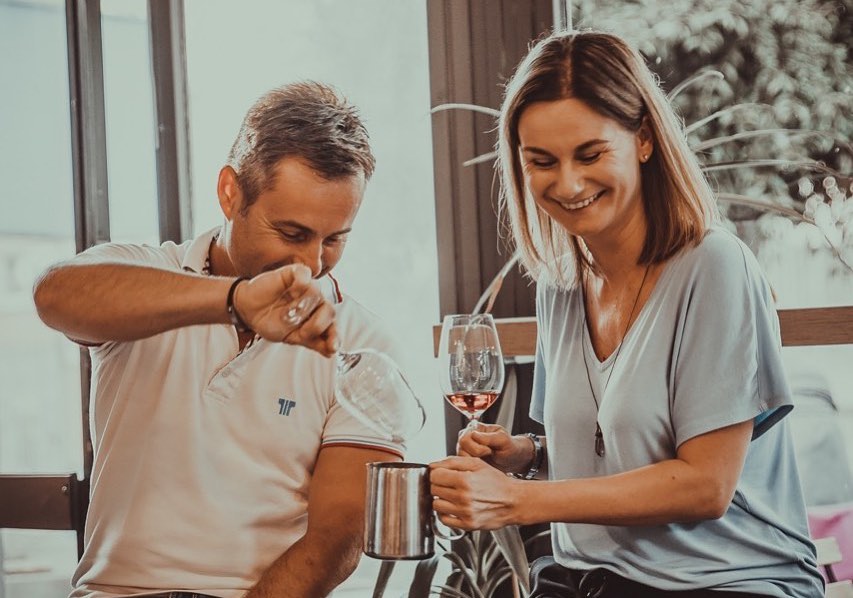
Sebestyén Winery
The Sebestyén Winery is a 30-acre family estate run by siblings, Csaba and Csilla Sebestyén. Csaba founded the family winery while Csilla was in Dublin working as a sommelier in a two-star Michelin restaurant. After a few years she returned to Hungary and joined her brother in the family winery. Her international experience helped the winery shift its focus from making wines with international varieties, rather to local varieties. They focus on the Kékfrankos variety, which is the backbone of most of their blends—including the famous Bikavér (Bull’s blood) wines from the Szekszárd region. Their goal is to produce (mostly) single-vineyard, elegant wines, which have a balanced oak influence and a strong varietal expression. This is a very Burgundian philosophy. Their vineyard land is divided among five different premium locations in the region: Iván-Völgy, Görögszó, Nána, Szentgál, and Porkoláb-Völgy.
Vida Family Wine Estate
The Vida family has 20 hectares of land, divided among five vineyard locations in Szekszárd, one of Hungary’s prime wine regions which is known for its big spicy reds, including Bull’s Blood. Péter Vida Sr. made his first Kadarka secretly and entered it in a local wine contest under the name of his father. His wine won the competition, and ever since then he has not been hiding his wines. His three children, who have all studies winemaking, are all deeply involved in the family business. Tasting with Péter, who could have been a poet in another life, is an unforgettable experience. In 2011 Péter Vida was named “Winemaker of the Year” by the Hungarian Wine Academy.
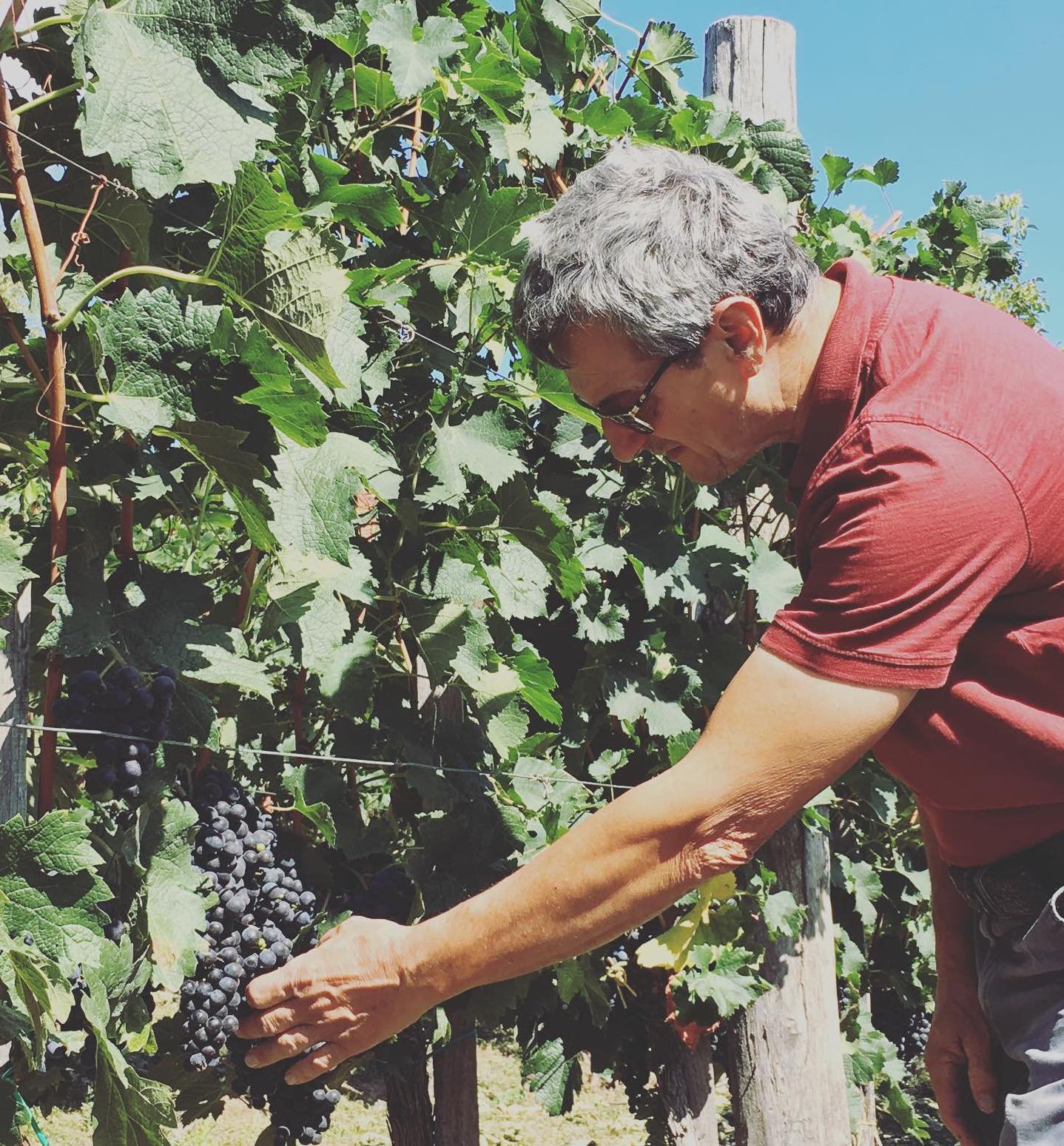
BALATONFURED-CSOPAK REGION
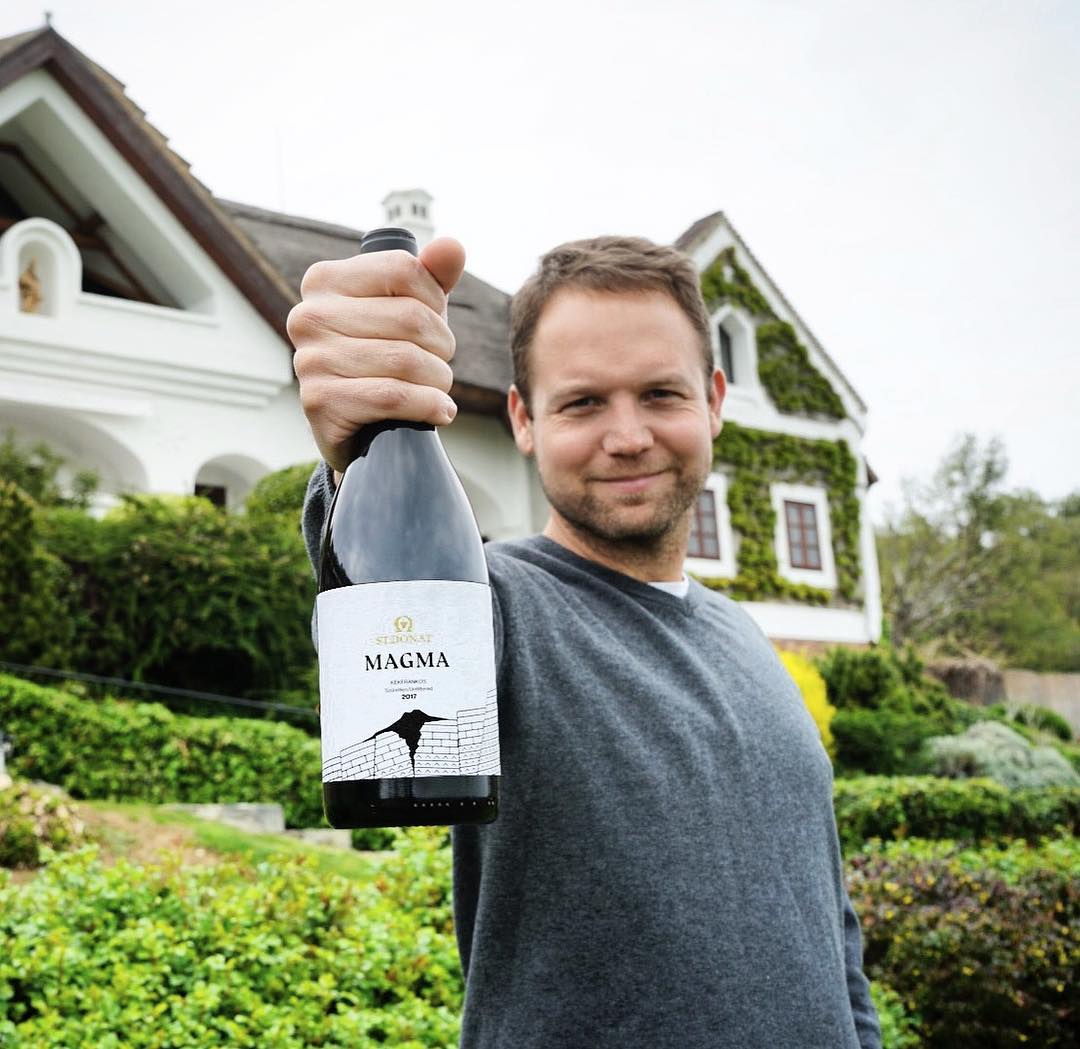
Szent Donát Estate
The Kovács family has deep roots at Lake Balaton and the nearby Káli Basin region, having been involved in making wine there for centuries. They founded the Szent Donát Estate in 1994, located in Csopak, a lovely village on the northern side of the lake (where they also have a restaurant). The whole family is involved in running the winery and its about 15 hectares of vineyards, with Tamas Kovács—the next generation—taking the lead as winemaker. There is minimal intervention during the winemaking process, and since 2015 Szent Donát has been officially organic. Their vineyards are located in some of the prime areas in Csopak, the Tihany peninsula, and the Kál Basin. Tamás Kovács is one of the leaders in the Codex of Csopak, an independent trademark protection system guaranteeing quality, which was created jointly by the region’s leading producers.
TOKAJ REGION
Gizella Winery
Gizella Winery is named after winemaker/owner László Szilágyi’s grandmother. Laszló (Laci) took the helms of the family winery in 2005, and has really focused on making clean and elegant wines, which are taught after in Hungary. Gizella’s estate is 19 hectares, spread among 12 vineyards in Tarcal, Bodrogkeresztúr, and Mád.
He has also been working to reconstruct some of his old terraced vineyards, like the Szil-Völgy vineyard (which was first mentioned in historical documents in 1612). Gizella focuses on Tokaj’s traditional grape varieties, planting mainly Furmint (62 percent), Hárslevelű (31 percent), and Sárgamuskotály (seven percent). Gizella is one of Tokaj’s most dynamic and exciting wineries, with distinctive wines which are always a pleasure to taste.
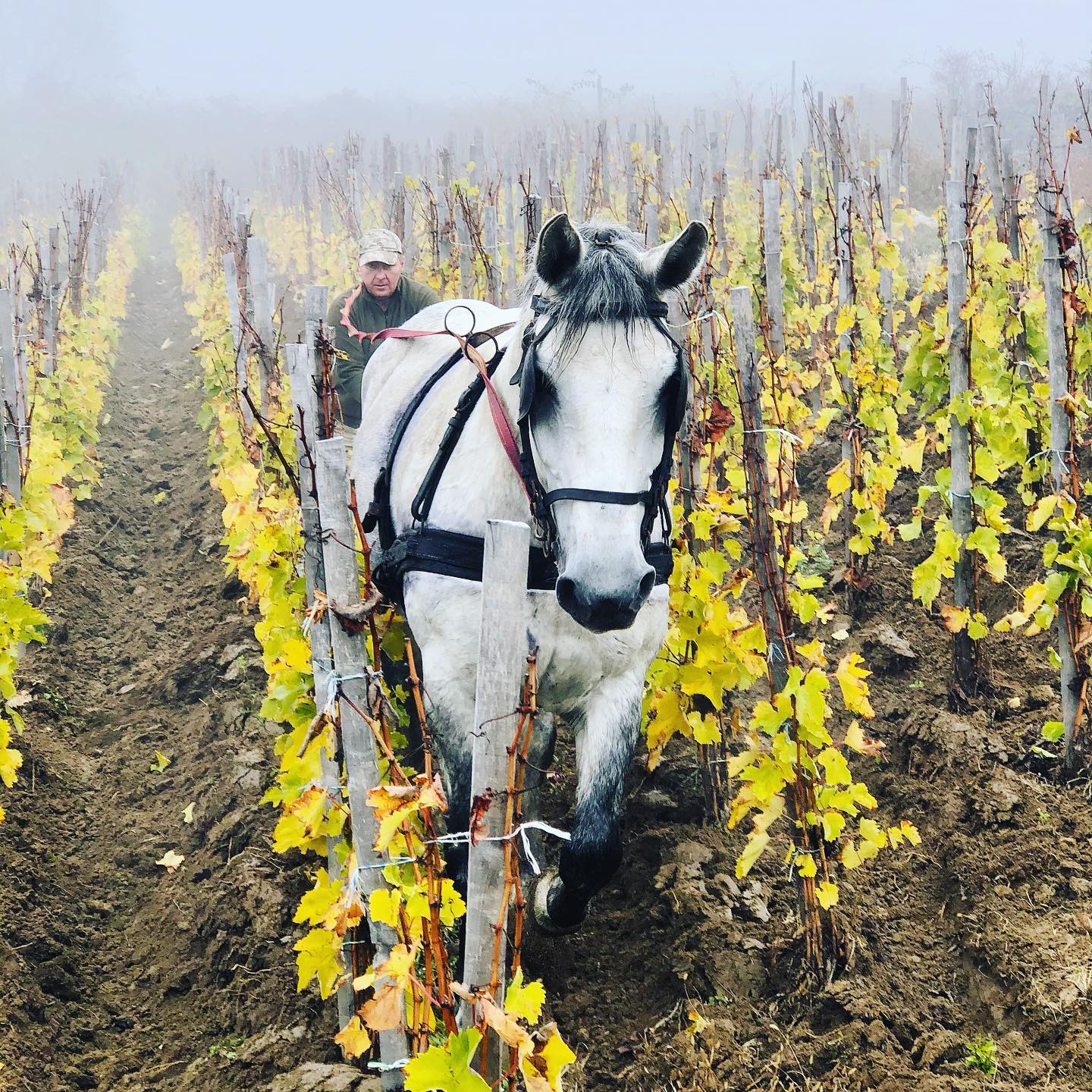
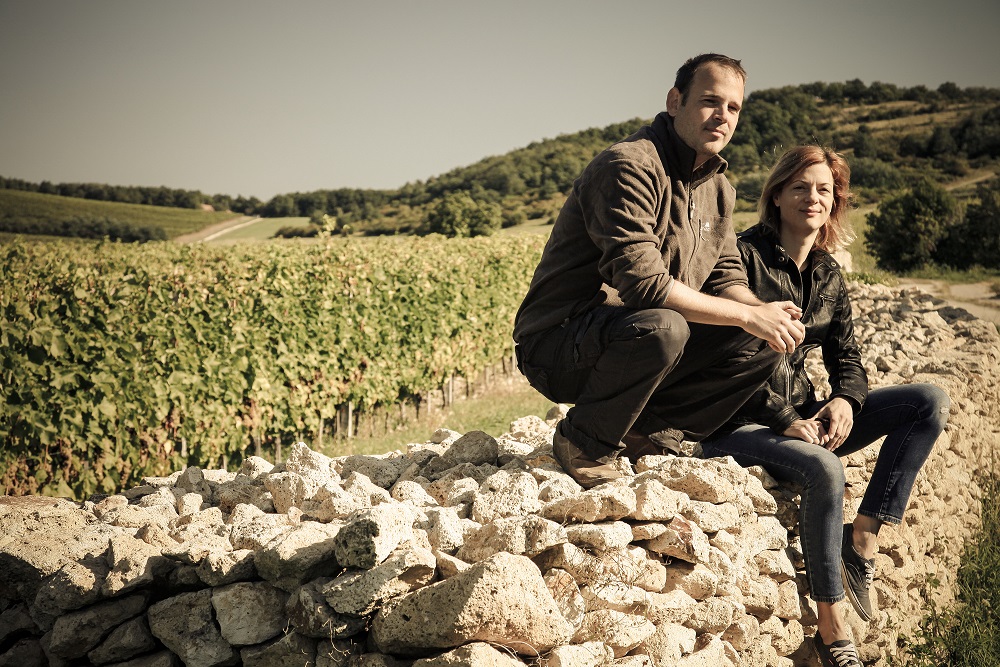
Erzsébet Winery
The Erzsébet Winery is one of Tokaj’s leading small wineries. It’s a true family-affair, run by siblings Hajnalka and Miklós Prácser and their parents. While Hajni sells the wine (and educates visitors on Tokaj), Miki is busy in the mould-covered cellar making the wine, and their parents (Miklós Sr. and Erzsébet) reign over the vineyards, which are located on some of the best grand cru vineyard sites in the region. Both siblings are well-traveled, but decided to remain in their hometown to focus on making top-notch wine and build the family business. Erzsébet Pince is located in the center of Tokaj, in an 18th century building which once belonged to a Russian wine merchant. Erzsébet makes the full range of Tokaj wines, from sparkling wine and easy-drinking aperitif-style wines, to top-notch dry single vineyard Furmints and some of the best Aszú in the region.
Szent Benedek Winery
Szent Benedek’s winemaker, József Ádam, aims to show the diverse volcanic soils of the vineyards around the top Tokaj towns of Tállya and Mád. This small family-owned winery is located in a 17th century villa in the village of Tállya, with an enchanting old mould-covered cellar. Ádam is a winemaker with passionate ideas about his work, and what a Tokaj wine should be. He believes blending dry wines from different vineyards is the key to real Tokaj-style dry wines, comparing blending to being ‘like mixing spices in cooking’. Then he likes to age them to perfection, for much longer than most wineries in the region do today.
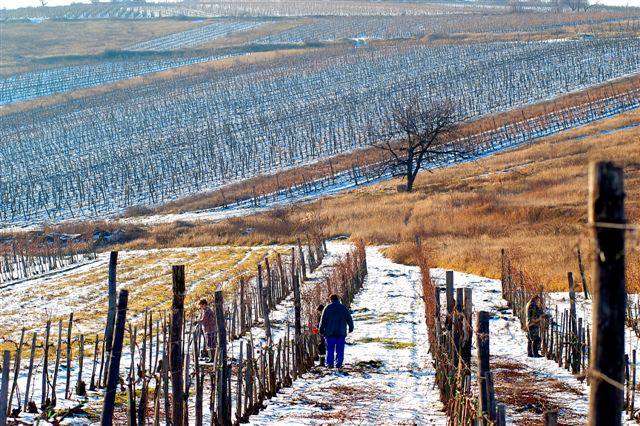
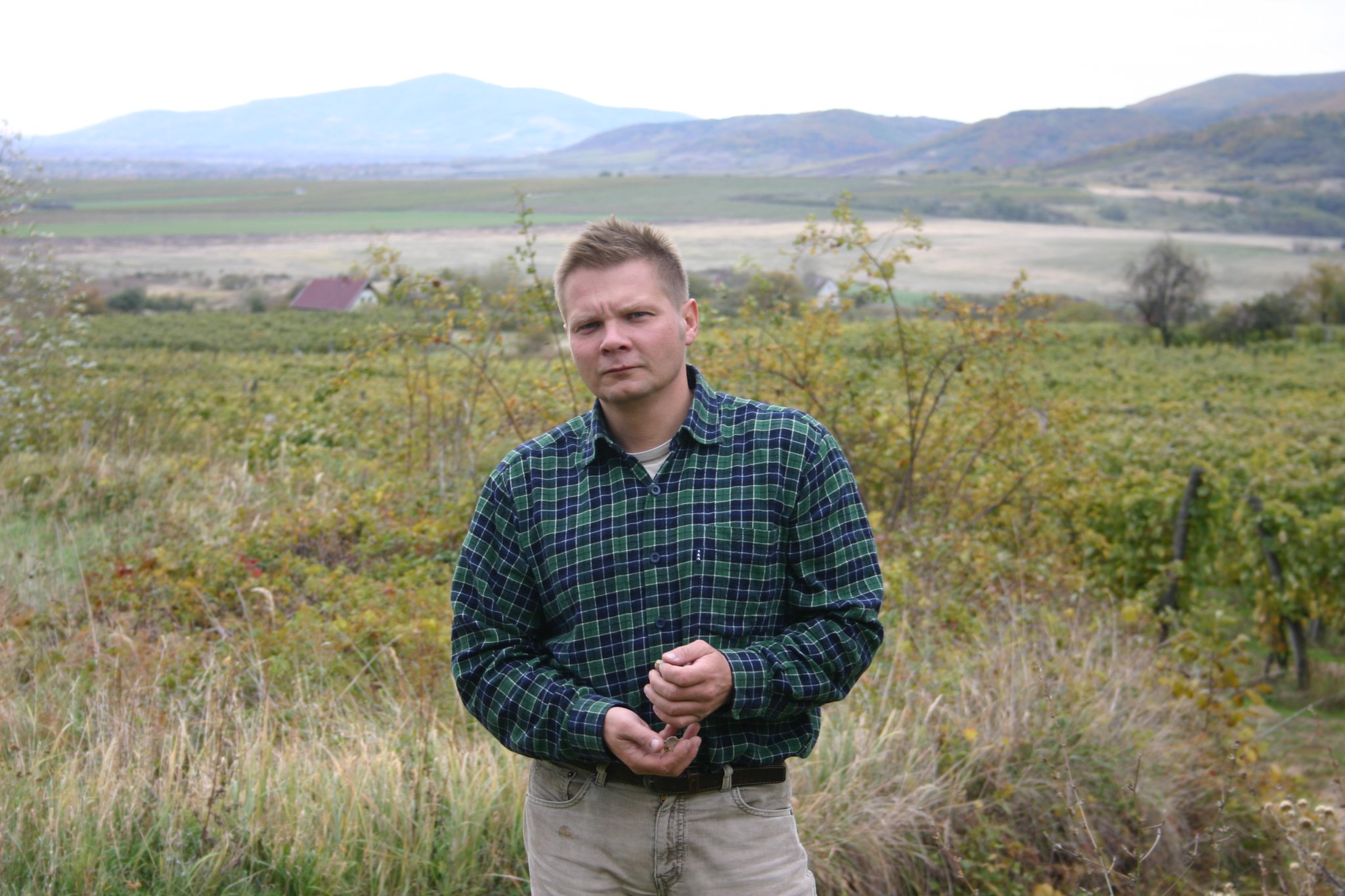
Karádi-Berger Winery
Zsolt Berger switched a life of financial journalism in Budapest for winemaking in the Tokaj region, and hasn’t looked back. He owns this winery, in the village of Erdőbénye, with wife Szilvia Karádi, who hails from the region. Located in an old villa which once belonged to an Armenian wine merchant, the couple has painstakingly restored the building, creating this winery from scratch. Karádi – Berger focuses on dry wines, like single varietal furmints from the Palandor and Narancsi vineyards. They are also one of the few wineries still regularly producing dry szamorodni, a wine which ferments under a layer of flor and is reminiscent of a fine Jura or a dry sherry.
Béres Winery
Béres is a well-known family name in Hungary. Before getting into the wine business, Dr. Béres developed the “Béres drops” (Béres csepp), a popular multivitamin that has also made it to the “Hungaricum” list, a list which names the most important Hungary products. The Béres family founded their winery in 2003. They have 45 hectares of vineyards, and an average annual production of 100,000 bottles. Their winery and many of their vineyards (and a plum orchard, from which they make pálinka) are located in the picturesque village of Erdőbénye.
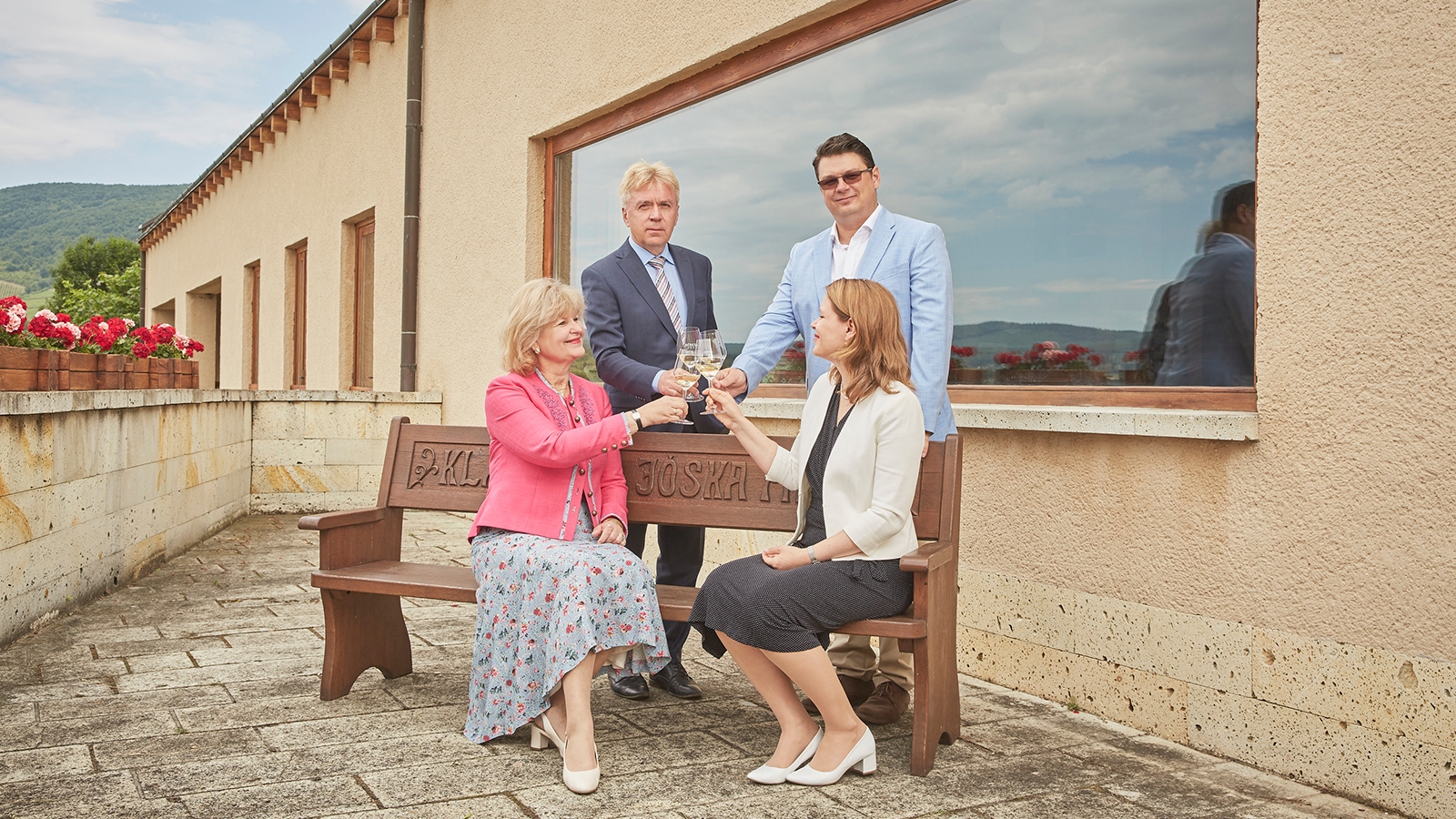
EGER REGION
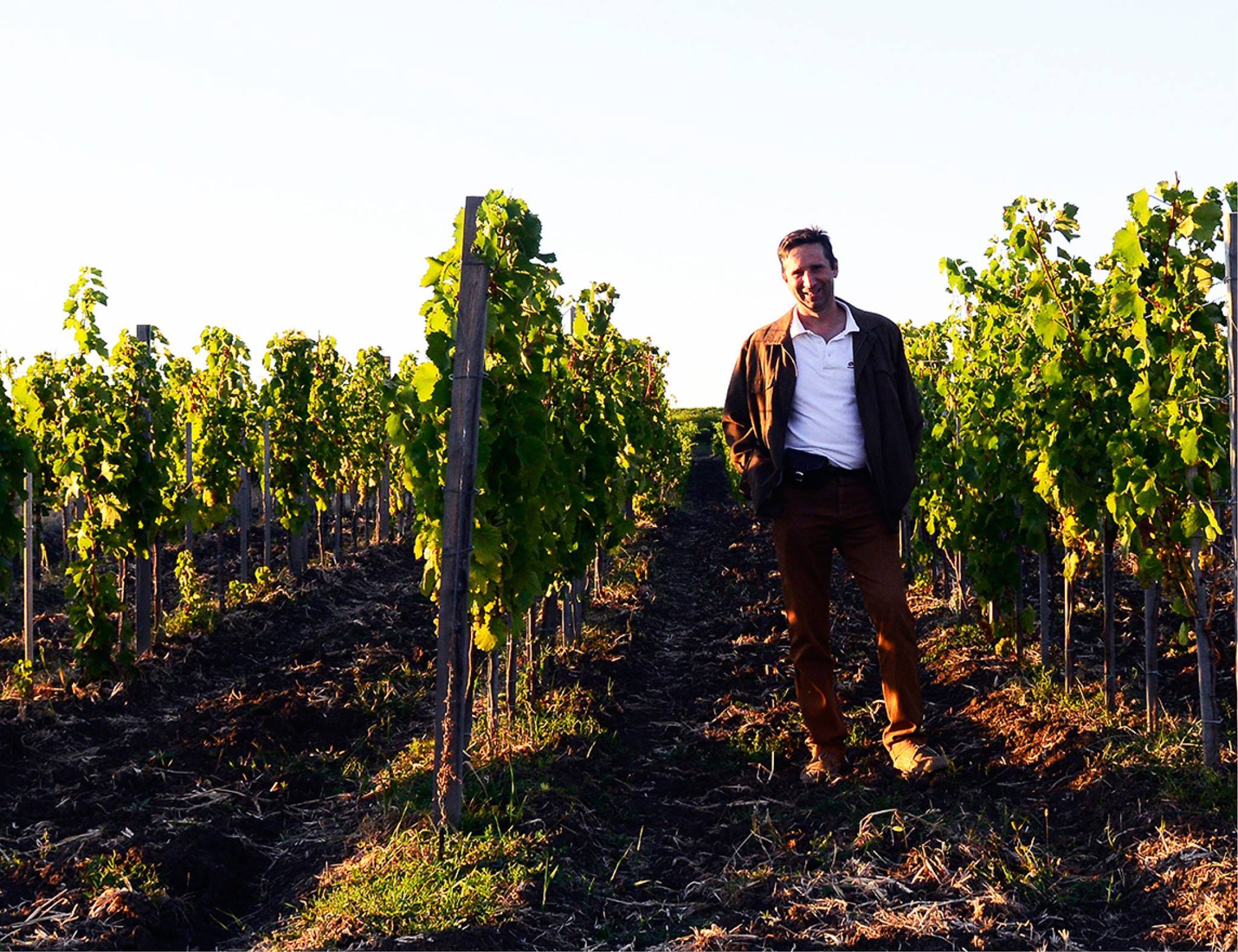
St. Andrea Winery
St. Andrea Winery and its father-son winemaking team— György Lőrincz Sr. and Jr.—must have won every wine award that exists in Hungary. Since founding the winery in 2002, the family has become arguably the top winery in the Eger region, and several of their wines are considered to be iconic labels in Hungary. Although St. Andrea grows around twenty grape varieties, they put most of their passion and efforts into their blends: Egri Bikavér (“Bull’s Blood”) and Egri Csillag (“Star of Eger”). They were at the forefront of the Bull’s Blood revival—turning it from a bottom-shelf supermarket wine to a world class blend that really expresses the Eger terroir. And they were also among the first champions of Egri Csillag, Eger’s white wine answer to Bull’s Blood. St. Andrea produces around 200,000 bottles annually.
Böjt Winery
László and Éva Böjt received a small vineyard plot as compensation after the fall of Communism, using it to found this winery in 1993. Located in the village of Ostoros, four kilometers from the city of Eger in northeastern Hungary, this is a relatively cool climate, and partially volcanic, wine region. Since 2016 Gergő and Boglárka, their son and daughter, have taken the lead and have been running the winery, producing outstanding wines which are great representations of the Eger terroir. The much travelled and internationally experienced Gergő makes the wine, and Boglárka sells it.
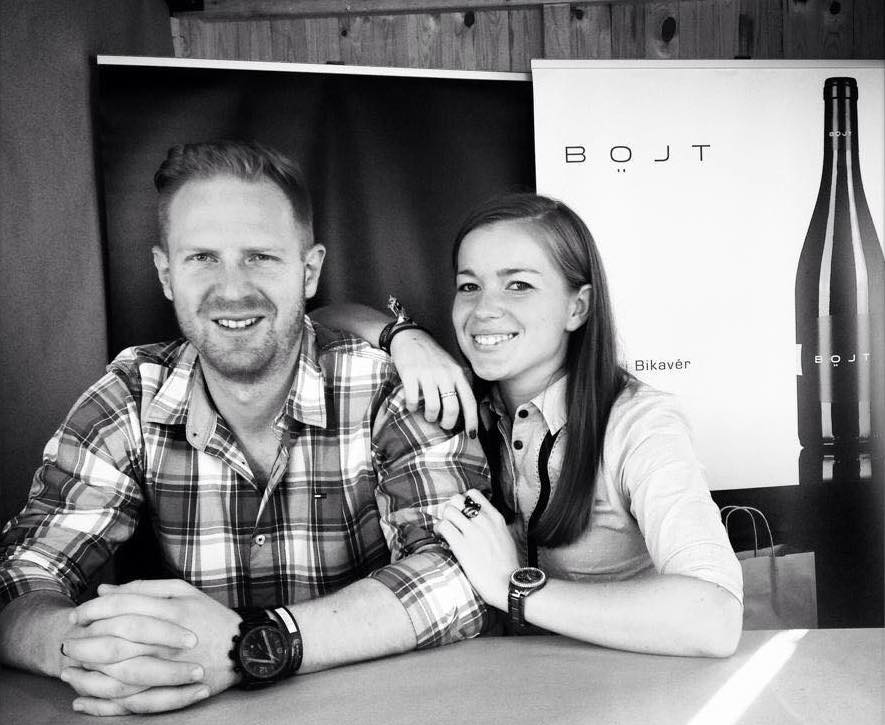
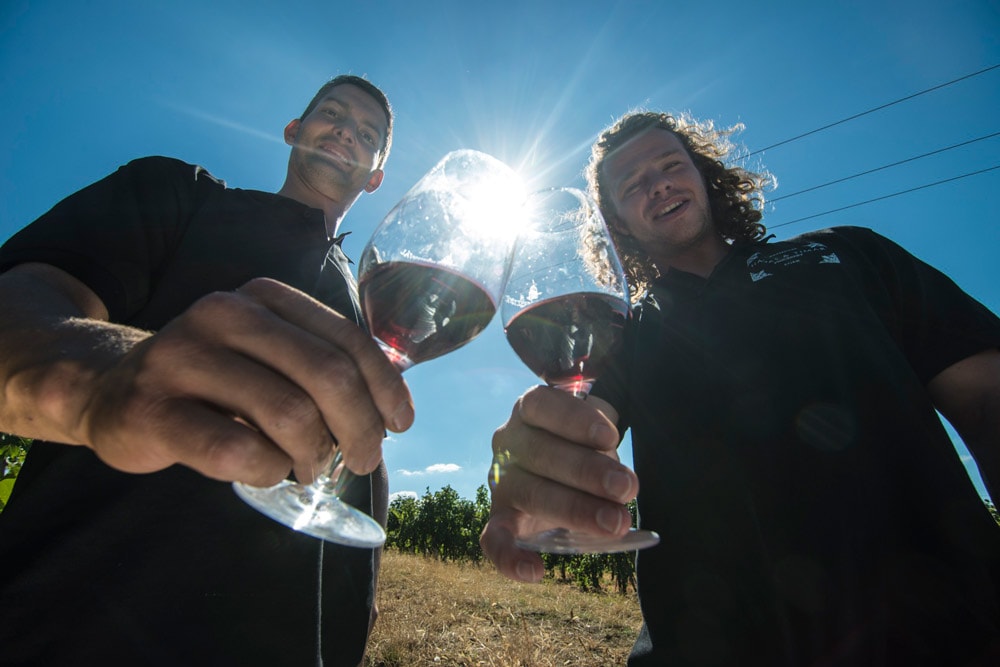
Havas & Timár Winery
Havas & Timár Winery is a small winery in Eger, founded by two long-time friends—Balázs Havas and László Tímár—in 2011. Balázs, a Budapest native, is the winemaker and oversees the vineyards. The pair started out with no vineyards of their own. But today they own one hectare (2.5 acres) of land in Eger and they buy the rest of their grapes from local growers, with the quality strict controlled by Balázs. Before switching to winemaking (and studying it at Corvinus University in Budapest) Balázs had a career in hospitality, with nature being a particular passion of his. He loves that winemaking allows him to follow both his passion for nature and for wine.
Toth Ferenc Winery
Ferenc Tóth—usually referred to as Feri bácsi, or “Uncle Frank”—was born and raised in Eger, and now has nearly seven decades of harvests under his belt. Tóth made his first Bikavér (Bull’s Blood) at the age of 16. But under the Communist regime, he wasn’t allowed to be a winemaker. Instead he worked in construction, but always made wine on the side. In 1983 Tóth and his wife, Marika, were able to acquire a 1.5 hectare vineyard, and started their little family winery. The Tóth family now has 30 hectares of vineyards on some of Eger’s best slopes, and the next generation joined the winery—their daughter, Katalin, and her husband. Ferenc Tóth is a big advocate of the Kadarka grape. He was named “Winemaker of the Year in Eger 2012,” and the family always aims to keep a balance between preserving the old-school Eger styles and traditions, while using the most modern technology, to make outstanding wines.
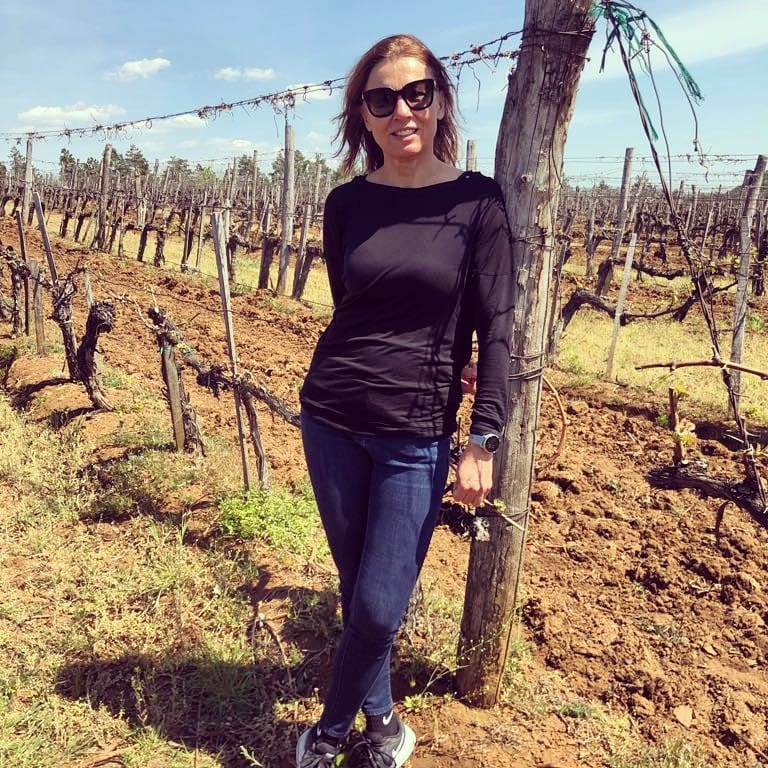
VILLÁNY REGION
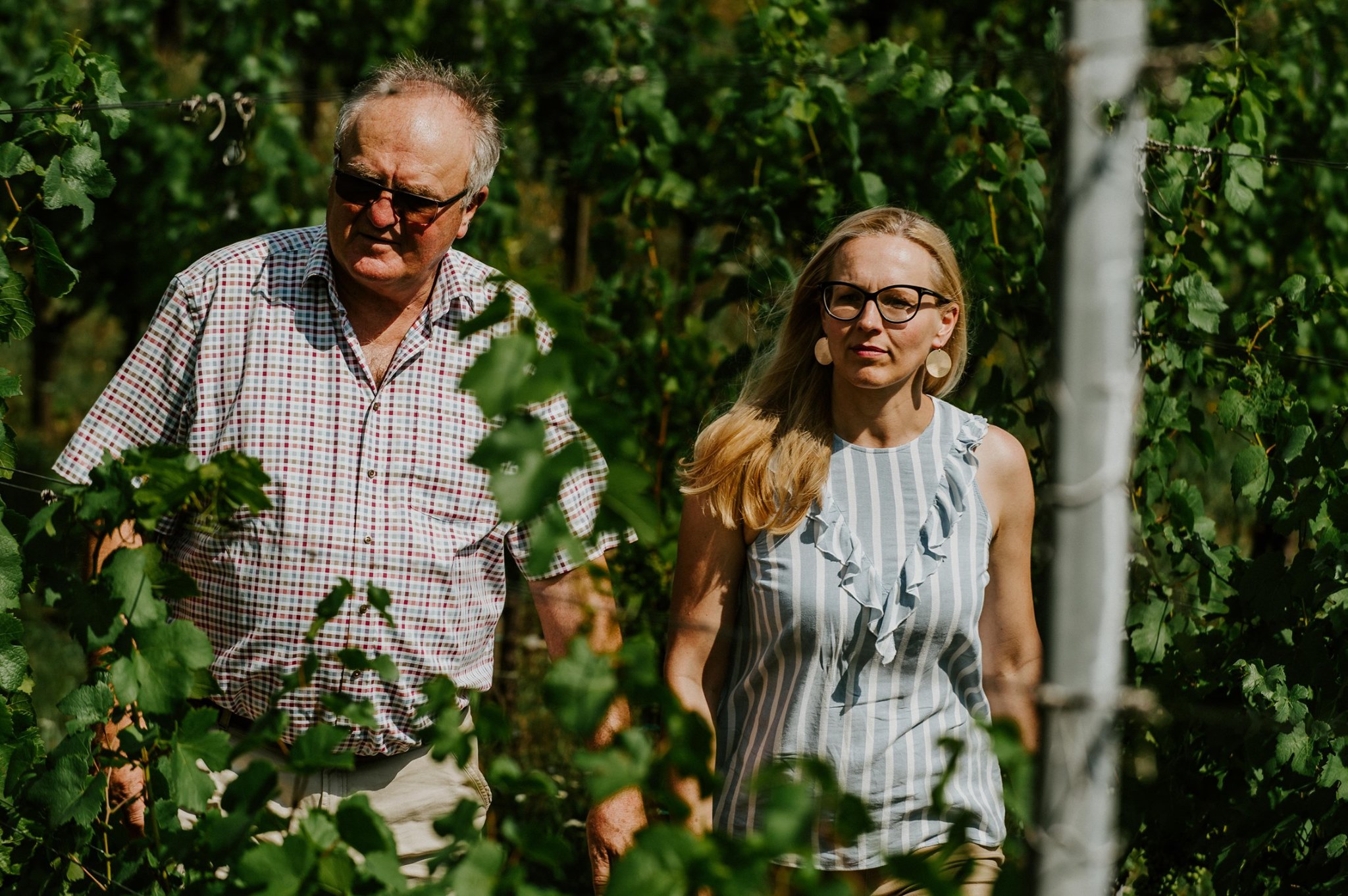
Gere Winery
Attila Gere is an iconic figure of Hungary’s wine scene. He established the Gere Winery just after the regime change in 1991. Gere is not only one of the pioneers of quality winemaking in Hungary after the change of regimes, but he is also a pioneer in Hungarian wine tourism. During the same year that Gere founded his winery, he also established Hungary’s first winery hotel. Now Gere is synonymous with the Villány region, and Villány is synonymous with Gere. Gere was named Winemaker of the Year in 1994, a prestigious award in Hungary, and in 1997 he released the first vintage of Gere Kopar, which has become, arguably, Hungary’s most iconic red wine. These days, Gere Kopar, is one of the rare wines in Hungary that is sold en primeur (which means it is sold in advance of its release), due to its high demand. The Gere Winery has been organically farming its 70 hectares of vineyards since 2010, and they are experimenting with varieties which are unusual to the region, such as Tempranillo. They are also growing exciting ancient Carpathian Basin varieties which are close to extinction, such as Fekete Járdovány, Bakator, Purcsin, Csóka, and others.
Heumann Winery
Erhard and Evelyne Heumann are a German/Swiss couple who were led by fate to switch careers and settle in Villány to make wine. After Evelyne’s father travelled to Villány and ended up buying some vineyards, the Heumanns started making wine there in 1993, bottled their first professional wine in 2003, and have steadily been building on their wine business since then. What started as a hobby is now a full-time job, with both of them devoted to the success and quality of the winery. Villány, located in the southernmost part of Hungary, is one of Hungary’s most prized red-wine-producing regions. It’s a region filled with whitewashed wine cellar rows, and beautiful vineyards. Their wines are opulent, concentrated, and dreamy, and are consistently among Hungary’s most highly rated reds.
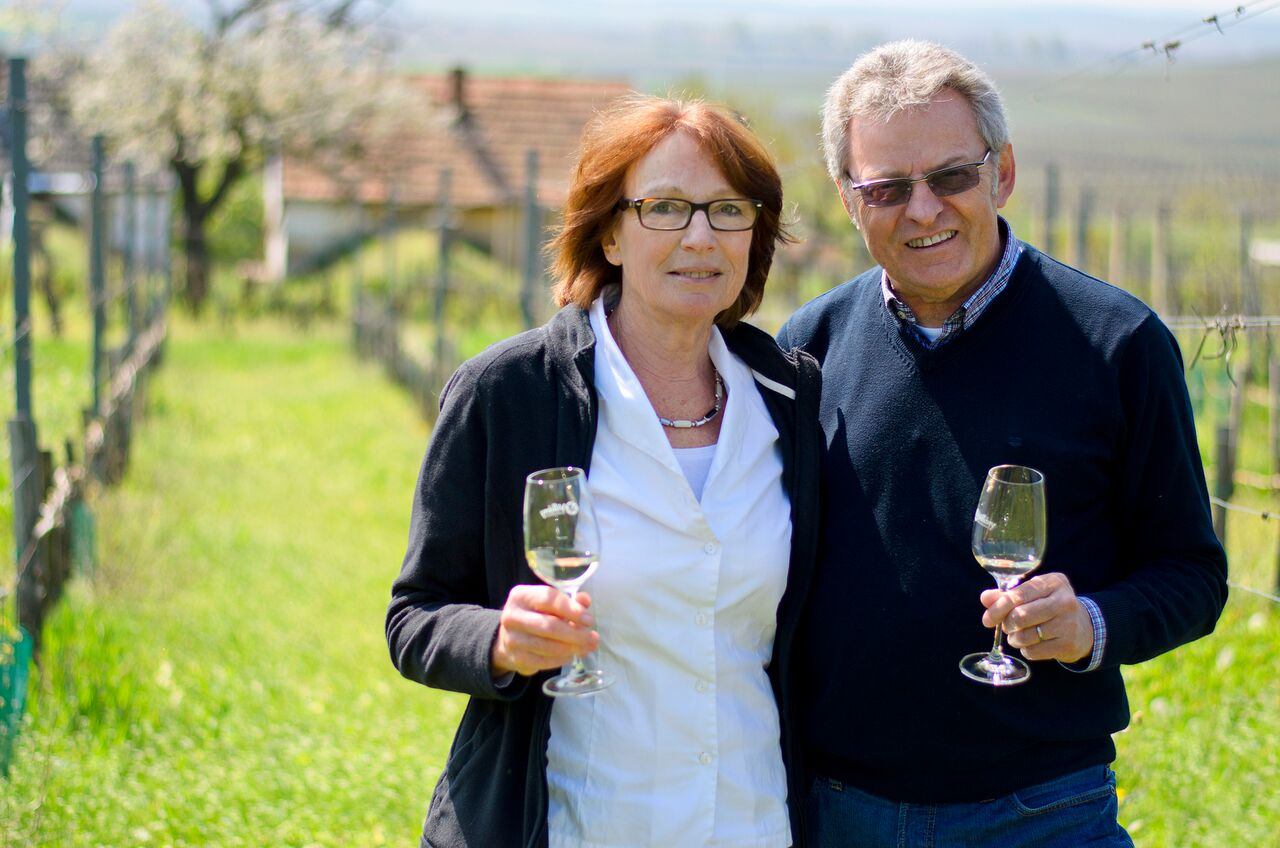
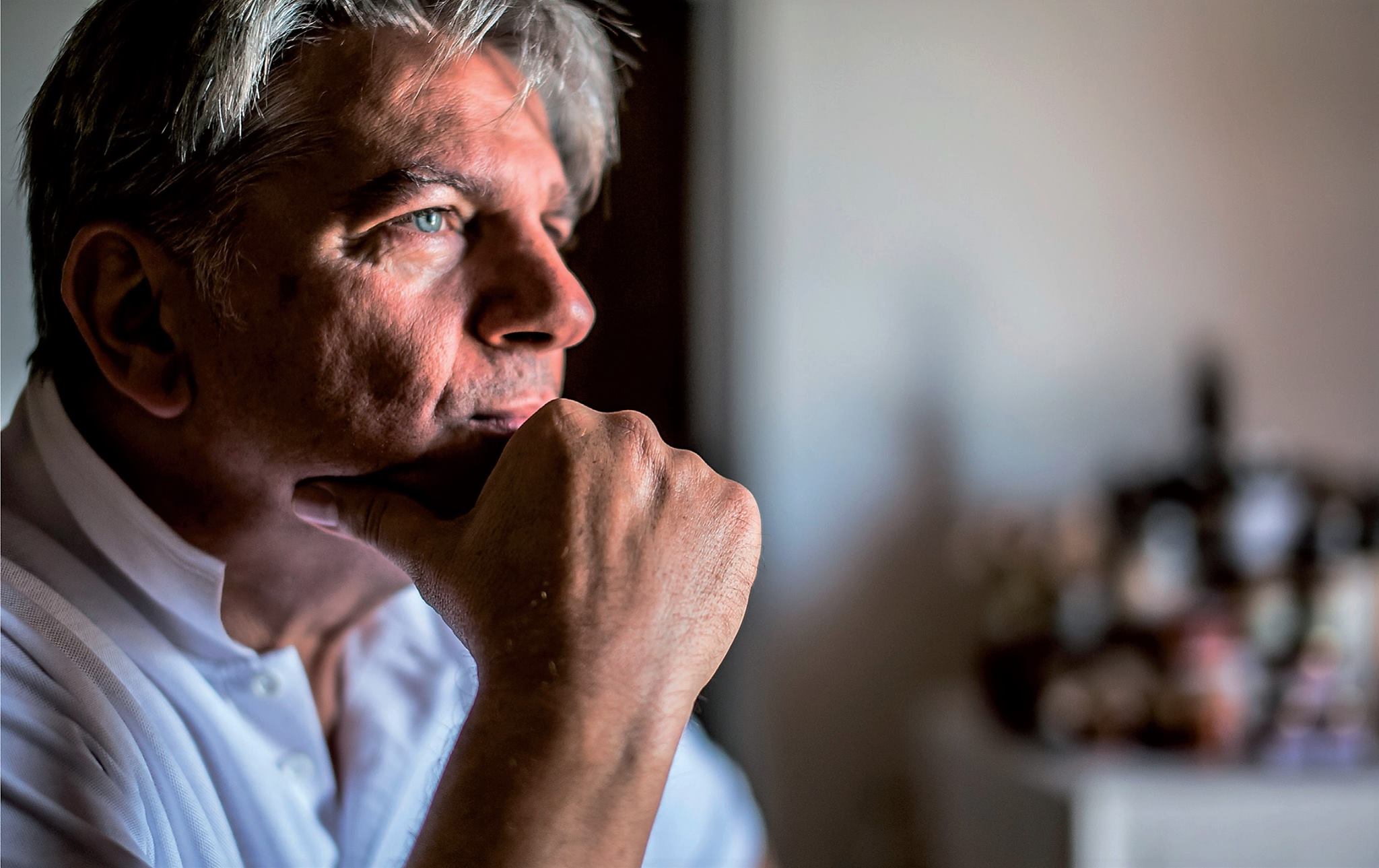
Malatinszky Winery
Csaba Malatinszky started his career in wine as a sommelier, working in several of Budapest’s top restaurants in the 1990s. He founded his winery in 1997 and has been fully organic since 1999 (certified organic in 2009). Malatinszky’s portfolio of older vintages is one of the things that makes his cellar notable. “From the beginning I had the idea that I would sell older wines, not just sell everything as soon as it was made.” He grows Chardonnay, Sauvignon Blanc, Rhine Riesling, Muscat Ottonel, Cabernet Franc, Cabernet Sauvignon, and Merlot, and produces 60 to 80,000 bottles per year. His winery is an environmentally conscious building, and was carefully planned for his focus on aging in small barrels. His wines are spontaneously fermented with native yeasts, and they are acclaimed for their complexity and elegance.
Riczu Tamás Winery
Tamás Riczu is a big advocate for organic farming and vegan wine—“it just tastes better,” he told us. He has been making wine in the region for 17 years now, first working with other wineries, but now on his own seven hectare estate, located on his Akasztófa vineyards in Siklós. Siklós (which was known as Serena in the Roman era) dates back to prehistoric times, with a 13th-century castle looming over the town. Riczu grows Blaufrankish, Merlot, Cabernet Sauvignon, and Olaszrizling, all of which is organically farmed. His wines are amazingly smooth, deep, and elegant.
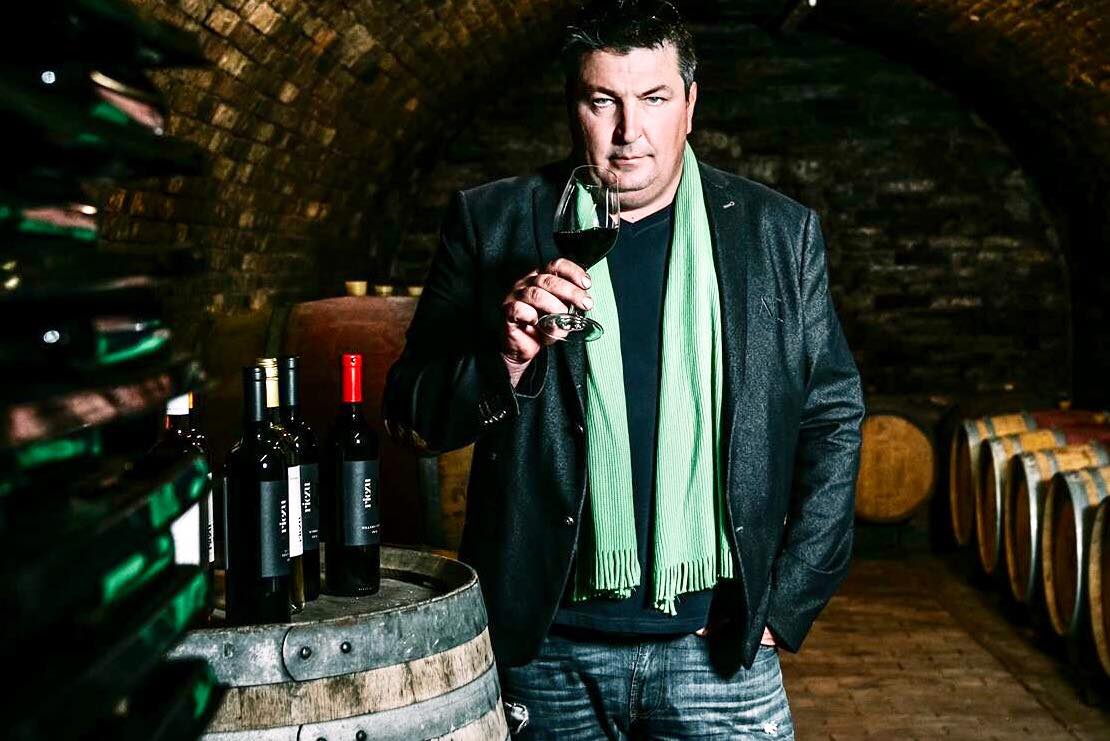
ZALA REGION
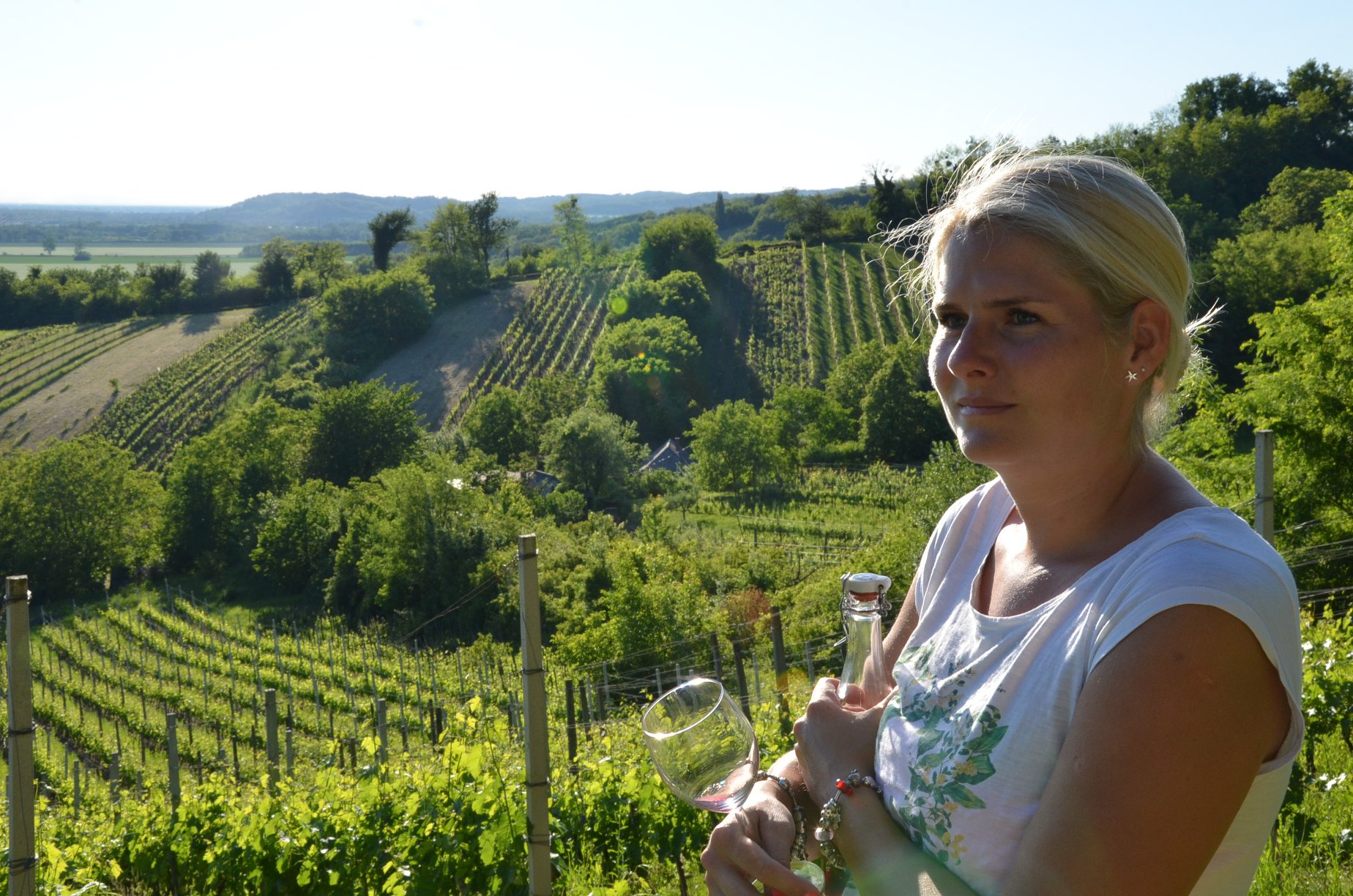
Bussay Winery
The Bussay Winery is located in the Zala region, which is in the far southwestern corner of Hungary. It’s one of Hungary’s smallest and least-known regions. Much of the region, including the Bussay Winery, straddles the Croatian and Slovenian borders, and the River Mura moderates its climate. The Busy Winery is located in the Csörnyeföld village, on the border of Hungary, Slovenia and Croatia. The winery was founded by Dr. László Bussay in 1988, and until his death in 2014 he was a leading figure in the region, in addition to serving as the local doctor. László’s daughter Dóra now runs the winery, and is the village doctor. At the winery she has a partner in her husband, Tamás Kis (who also makes wines at his own winery in Somló, Somló Vándor). Bussay has 5.5 hectares of vineyards, and has been fully organic for the past three years.
SOMLO REGION
Kolonics Winery
Károly Kolonics’s family goes back several generations in the Somló area. He has a reverence to this terroir, which is evident in his textbook Somló style wines. They are rich, full-bodied, and waxy, perfectly reflecting Somló’s volcanic terroir with minerality, saltiness, and concentrated flavors. Kolonics grows Olaszrizling, Furmint, Juhfark, and Hárslevelű on 9 hectares of mostly in thick basalt crumble soil vineyards. He is a traditional winemaker, and typically ferments his wines in oak, and then ages them for one to three years before bottling. He is serious about his unique aging methods. His wines are all named for the barrels in which they mature, so he can produce multiple versions of single varietal wines from the same vintage, each aged in a different oak or acacia barrel, resulting in different styles. A photograph of his great-grandfather, who emigrated to America before World War One, appears on all of his labels.
